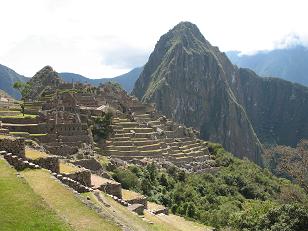

1) The western shore of Santiago Island is dramatically different from the volcanic eastern edge. Here plants and wildlife flourish and, in the 1950s, a salt mine even operated on the side of this mountain.
2) Diego, our guide and naturalist, was went ashore with us on each island and was extremely knowledgable.
3) Another eye-catching Sally Lightfoot crab.
4) A great blue heron guarding its nest.
5) A massive pile of marine iguanas, all laying out on the dark sands of the beach. They periodically "spit" salt out of special glands on their noses, so the dark sand is covered with little white balls of salt.
6) A close-up of the iguana scrum.
7) These are American Oystercatcher birds. Their name supposedly comes from the fact that they are the only member of Oystercatcher family which makes noise.
8) Artsy photo: bird feather on lava.
9) The female Galapagos sea lion has to go out into the water to feed and thus leaves her pup onshore. We came across a colony of pups, just hanging out on the rocks waiting for mom's return.
10) Jonna befriending one of the sea lion pups. (We kept a respectful distance as human scent on a baby can result in the mother rejecting the pup.)
11) One of the most beautiful places we visited in the Galapagos were the pools on western shore of Santiago. Natural lava bridges crossed over stunning blue pools of water with sea lions and Galapagos fur seals zooming back and forth in the water.
12) Another section of Santiago with grey tree trunks sticking up through hard, crusty ground. Talk about a diverse landscape!
13) Brenda usually collects beach shells but since the Galapagos is a National Park, it is illegeal to remote anything from the islands. Brenda collected these on the beach and then created her own little Pachamama shrine.
14) Alan about to head out snorkeling in his "Steve Zisou" wetsuit. The snorkeling offshore here was incredible, the highlight being about 15 minutes swimming with a grazing group of sea turtles.
15) The ever-present frigate birds use the updraft coming off the bow of the ships to effortlessly travel between islands. It wasn't uncommon to have half dozen frigate floating must above your head while standing on the top deck. Here Harvey and Dirk enjoy the view as the Carina moved from Santaigo Island to Rabida Island.
16) The red sand of Rabida Island contrasts with the black and brown sand we'd seen on Bartolome and Santaigo. The dead looking trees are in fact incense trees. They go dormant in between rainfalls. These trees are low on the island and thus don't get much rain, while trees at the top of the mountain are apparently light green nearly year round.
17) Brenda and Harvey, Alan's parents, enjoying the view from the sun deck.
18) Our our cruise between Rabida Island and Baltra Island, we encountered the National Geographic research ship the Endeavor. They were in a cluster of small islands known as the Bainbridge Islands.
19) We made a brief side trip in the Bainbridge Islands to come to this volcanic cone. Living inside was a small flock of pink flamingos, the tropical half of the tropical bird/arctic bird co-habitation that was mentioned earlier in this photo log.
20) Our next stop was on North and South Plaza Islands. The blue of the water in the shallow bay between the islands was gorgeous. Less romantic is the band of white on the island's shore. That isn't sand...it is sea lion poo.
21) The Carina was our ship throughout our Galapagos cruise and was excellent. The crew was fantastic, the accomodations surprisingly comfortable and the food was amazing.
22) Sea lions are plentiful around the islands but they were the most numerous and the most playful here. This young female seemed to be performing for us as we went ashore.
Swimming with sea lions,
bobbing, spinning and turning.
Sun shines on my back.
23) The sea lions onshore were no less photogenic.
No fear of humans,
seals, lizards and iguanas.
We are just strangers.
24) North and South Plaza Islands are interesting because were are not formed by volcanic activity but were instead pushed up from below by tectonic activity. As a result, they have actually sandy surfaces which turns out to be an ideal environment for cactus to thrive.
25) Evolution, being the effective system it is, then resulted in a species of land iguana evolving which exists by eating cactus seeds. Over the ages the iguana have adapted so successfully that cactus seeds never actually make it into the ground and now the cactus is becoming extinct.
26) For every cactus there is at least one iguana, each waiting for one of those small round cactus seeds to drop.
27) Sea lion males build up a harem of females on the beach and then spent all their time fighting off other males who want to horn in on the ladies. When a male sea lions gets beaten up in the beach wars, he heads off to the quiet side of the island to heal up. This guy is laying on top of a 50 ft cliff, licking his wounds and dreaming of a harem of his own.
![]() Go forward to the
fifth '09 Peru & Ecuador Trip Photo Page.
Go forward to the
fifth '09 Peru & Ecuador Trip Photo Page.
![]() Return to Alan and Jonna's Travel Page
Return to Alan and Jonna's Travel Page